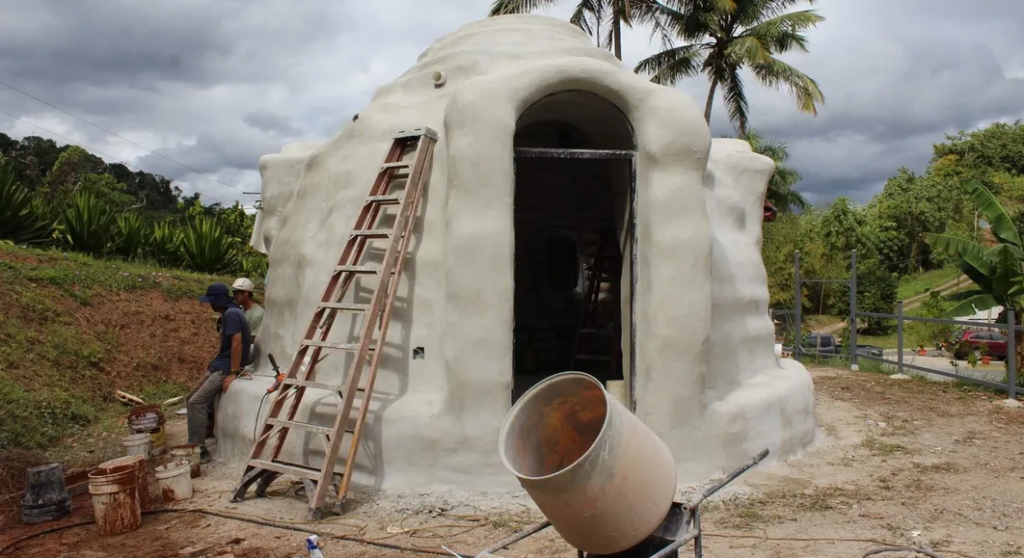Thousands of people in Puerto Rico were still living under blue tarps three years after Hurricane Maria struck the island, and more than 30,000 families asked the government for assistance after the storm destroyed or damaged their homes. This is why Paula Paoli and Owen Ingley are in Las Marías, Puerto Rico, and hope to help homeowners avoid the destruction of houses in the future. The couple are ingtroducing Superadobe domes to help people who have lost their homes replace them with structures that have the resiliency to withstand weather events that devastate Puerto Rico with increasing frequency.
“An emergency relief structure could be built for as cheap as $1,500 to $2,000 in materials,” Ingley says. “A tiny, more permanent home could be built between the range of $8,000 to $15,000.”
The couple founded Plenitud, a nonprofit educational farm and community in the western part of the island. They build these homes as emergency relief and promote SuperAdobe as a alternative to other kinds of new homes. It is up to some nonprofits to further the construction of this type of housing on the island, since it is not an officially approved repair or reconstruction method for the Federal Emergency Management Agency.
The SuperAdobe construction method is finally coming up to a final assessment by the International Code Council, a body of construction experts and engineers that certifies acceptable methods for construction.
 At first glance, a SuperAdobe house resembles an igloo. According to Ingley, earthbag buildings are resistant to the heavy winds and flooding of a hurricane, as well as the movements of an earthquake. The materials also make this type of building environmentally friendly. Builders can use dirt and other materials found onsite, making this type of building environmentally sustainable.
At first glance, a SuperAdobe house resembles an igloo. According to Ingley, earthbag buildings are resistant to the heavy winds and flooding of a hurricane, as well as the movements of an earthquake. The materials also make this type of building environmentally friendly. Builders can use dirt and other materials found onsite, making this type of building environmentally sustainable.
SuperAdobe home materials offer flexibility and strength, allowing the building to shift without cracking or breaking. The roof with an arch shape resists heavy wind better than flat ones.
Ingley studied bioconstruction at CalEarth, which is at the forefront of popularizing SuperAdobe construction across the country. For the past four years, CalEarth has been working with the ICC to have earthbag building standardized among ICC codes. According to CalEarth’s president, Dastan Khalili, SuperAdobe could be included in ICC codes soon. “We’re in the last phases of testing with the ICC right now,” Khalili said. “With many people homeless and living in inadequate housing, the solution is right under their feet.”
Once adopted into the International Residential Code, each code must be specifically adopted by a jurisdiction to become a part of its building regulations, with room for modifications.
“It’s a building technique that’s attractive for considering the problem of how we can have affordable housing that’s resistant to global climate change,” Ingley said.
You can read the original article at www.usatoday.com


The disadvantage of earthbags in the tropics is that the home becomes a heat sink and very uncomfortable to live in. The homes need to be shaded.
In some instances it is possible to fill the bags with insulating materials, which provides a very different dynamic.
Often, taking matters into your own hands is better than waiting for the government to do it!